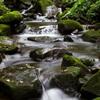Changes in phenology, or the seasonal timing of recurring life history events such as breeding, feeding, and movements, have emerged as a primary indicator of species’ responses to climate change. In terrestrial environments, shifts in phenology have been well documented; for example, earlier onset of spring and advances in the timing of emergence, flowering, and arrival times of migratory organisms have all been observed.
Far fewer examples exist that provide direct evidence for climate-induced shifts in marine phenology. This presentation from the U.S. Geological Survey summarizes the current state of knowledge for shifts in phenology (or lack there of) across the Gulf of Maine, a region currently experiencing rapid and intense seasonal and annual warming.
USA National Phenology Network — Partner to Advance Science Decisions

